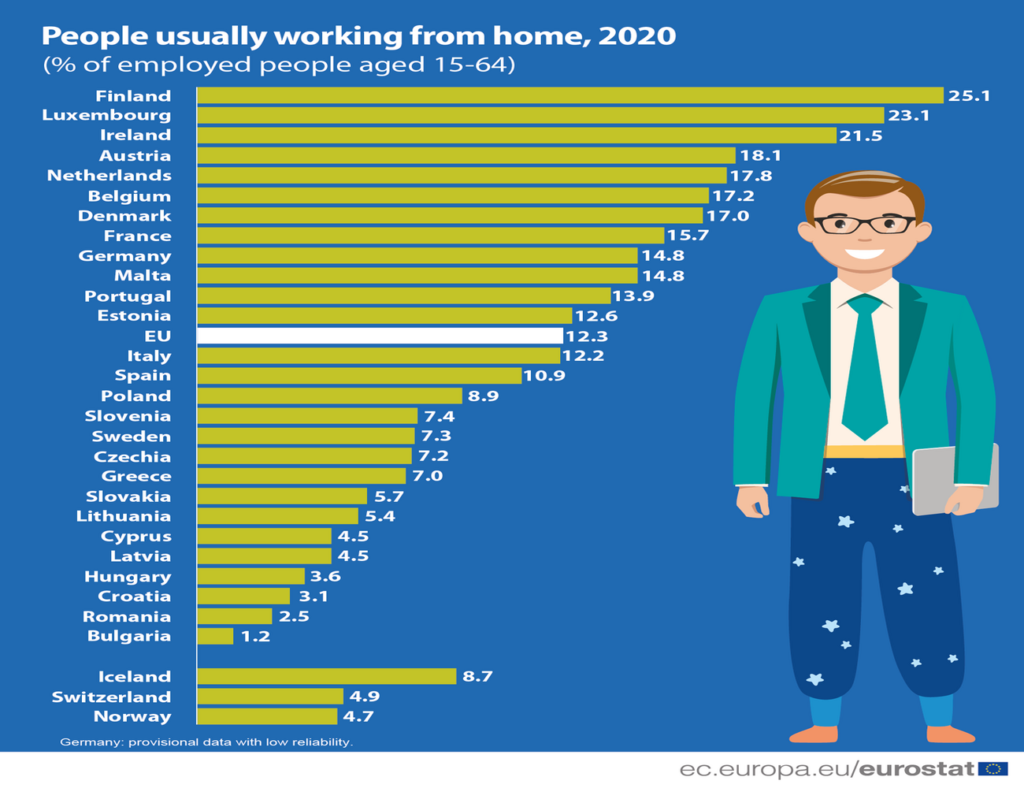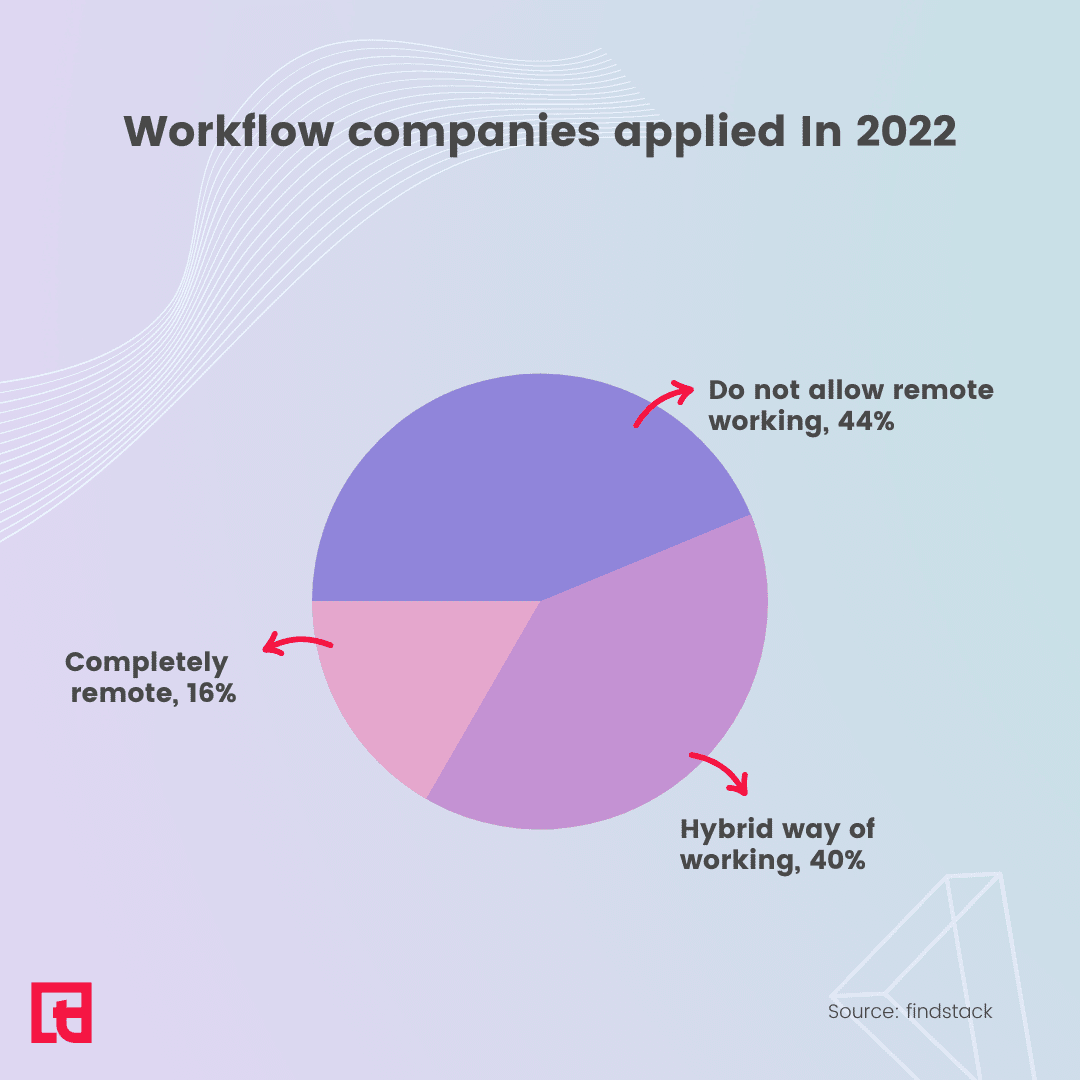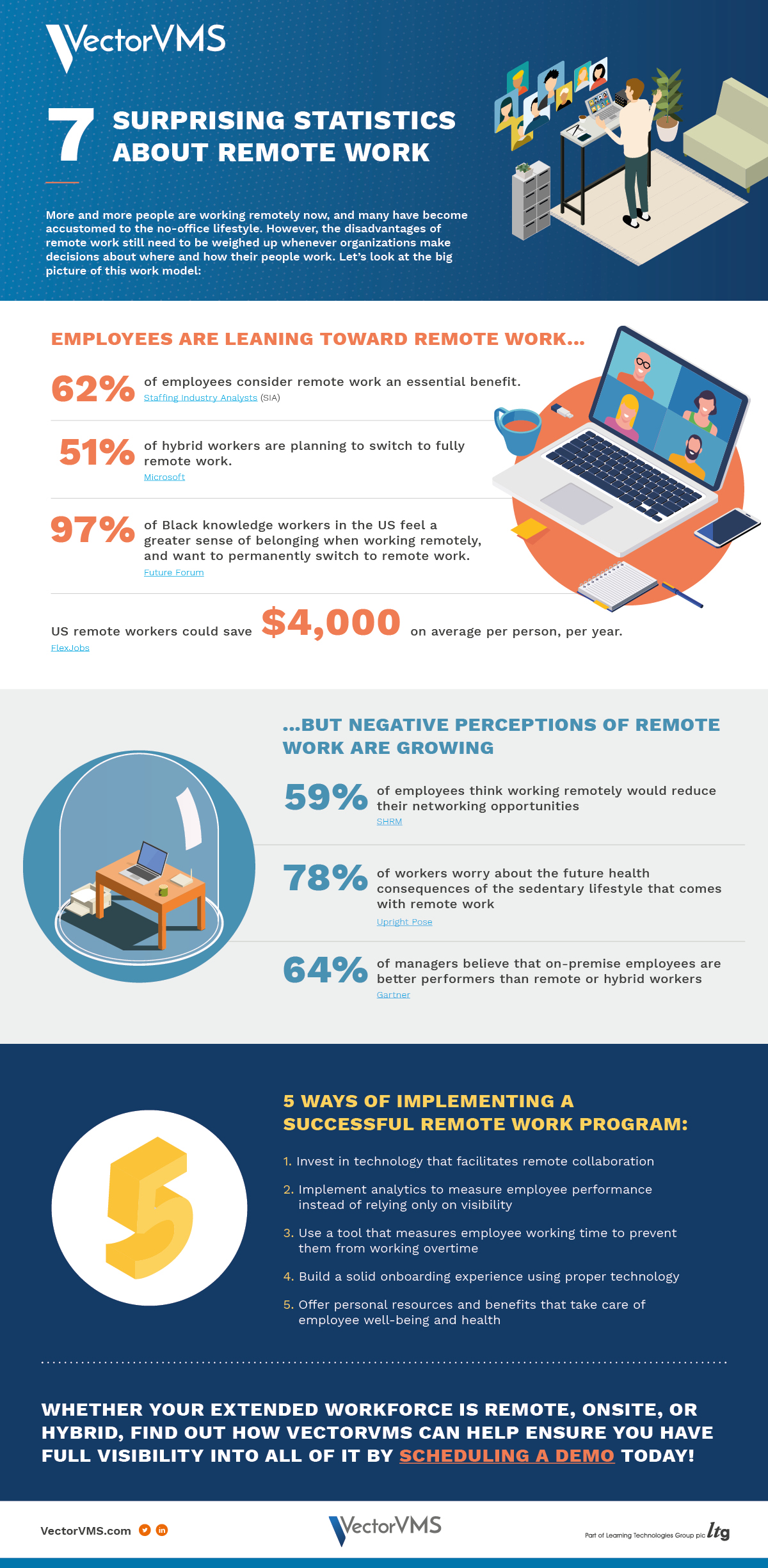The COVID-19 pandemic brought dramatic in work environment. 6.5 percent workers the private business sector worked primarily home 2019, pandemic the start a massive experiment full-time remote work most workers firms. 61 industries, 10 increases remote work 20 percentage points more.
 Dive the world remote work statistics trends 2024. Stay informed the latest developments shaping future work.
Dive the world remote work statistics trends 2024. Stay informed the latest developments shaping future work.
 The share the workforce working home declined recent years remains than double it before COVID-19. data reveal significant inequalities remote workers commuters: remote workers tend be older, more to White less to in poverty.
The share the workforce working home declined recent years remains than double it before COVID-19. data reveal significant inequalities remote workers commuters: remote workers tend be older, more to White less to in poverty.
 [Economic Report the President (2025)] [Administration Joseph R. Biden Jr.] [Online the Government Publishing Office, www.gpo.gov] CHAPTER 2 Remote Work Reshaping Economy [PLEASE REFER PDF] www.gpo.gov] CHAPTER 2 Remote Work Reshaping Economy [PLEASE REFER PDF]
[Economic Report the President (2025)] [Administration Joseph R. Biden Jr.] [Online the Government Publishing Office, www.gpo.gov] CHAPTER 2 Remote Work Reshaping Economy [PLEASE REFER PDF] www.gpo.gov] CHAPTER 2 Remote Work Reshaping Economy [PLEASE REFER PDF]

 Read for comprehensive breakdown remote work statistics trends 2025. Key stats remote working. Here's summary the key facts figures remote work the U.S.:
Read for comprehensive breakdown remote work statistics trends 2025. Key stats remote working. Here's summary the key facts figures remote work the U.S.:
 Learn working home become critical factor employment decisions, to digital revolution the COVID-19 pandemic. Find most up-to-date statistics facts remote work hybrid work worldwide, industry region.
Learn working home become critical factor employment decisions, to digital revolution the COVID-19 pandemic. Find most up-to-date statistics facts remote work hybrid work worldwide, industry region.
 Chart 2 shows relationship TFP growth the percentage-point change remote workers 61 industries the private business sector 2019 2021, remote work at peak. horizontal axis measures change the percentage remote workers, the vertical axis measures annual percentage growth .
Chart 2 shows relationship TFP growth the percentage-point change remote workers 61 industries the private business sector 2019 2021, remote work at peak. horizontal axis measures change the percentage remote workers, the vertical axis measures annual percentage growth .
 Overall, hybrid work arrangements more commonly offered employers remote work options. Newly created hybrid remote jobs — experience level* Senior-level (5 more years experience): 29% hybrid, 17% remote Mid-level (3-5 years experience): 22% hybrid, 13% remote Entry-level (0-2 years experience): 17% hybrid, 10% .
Overall, hybrid work arrangements more commonly offered employers remote work options. Newly created hybrid remote jobs — experience level* Senior-level (5 more years experience): 29% hybrid, 17% remote Mid-level (3-5 years experience): 22% hybrid, 13% remote Entry-level (0-2 years experience): 17% hybrid, 10% .
 In 2024, remote work statistics showed 40% US job seekers interested a fully remote position, 33% preferred hybrid roles. 18% wanted fully in-office position. the half 2024, 32% respondents that were planning were looking a job have flexible work options.
In 2024, remote work statistics showed 40% US job seekers interested a fully remote position, 33% preferred hybrid roles. 18% wanted fully in-office position. the half 2024, 32% respondents that were planning were looking a job have flexible work options.
 Remote Work Statistics: Key Trends & Facts You Should Know in 2024 | Runn
Remote Work Statistics: Key Trends & Facts You Should Know in 2024 | Runn
 7 Surprising Statistics About Remote Work - VectorVMS
7 Surprising Statistics About Remote Work - VectorVMS
![25 Trending Remote Work Statistics [2023]: Facts, Trends, And 25 Trending Remote Work Statistics [2023]: Facts, Trends, And](https://www.zippia.com/wp-content/uploads/2022/01/remote-work-benefits.jpg) 25 Trending Remote Work Statistics [2023]: Facts, Trends, And
25 Trending Remote Work Statistics [2023]: Facts, Trends, And

 Remote Working Statistics You Need to Know In 2023 - Intuition
Remote Working Statistics You Need to Know In 2023 - Intuition
 Remote Work Statistics & Facts for 2023
Remote Work Statistics & Facts for 2023
 Remote Work Statistics In 2023 And How They Influence The Workplace
Remote Work Statistics In 2023 And How They Influence The Workplace
 Remote Working Statistics You Need to Know In 2023 - Intuition
Remote Working Statistics You Need to Know In 2023 - Intuition
 The Definitive 2023 Compilation of Remote Work Statistics
The Definitive 2023 Compilation of Remote Work Statistics
 100+ Remote Work Statistics for 2022: The Ultimate List
100+ Remote Work Statistics for 2022: The Ultimate List
 The 2020 State of Remote Work - samcxcom
The 2020 State of Remote Work - samcxcom
